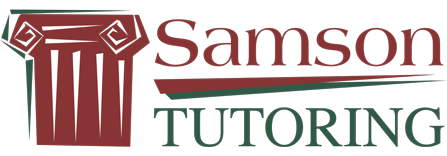Samson Academy Blog
Homeschooling is not school at home. In this video, I describe some of the differences between homeschooling and institutional public/private schools.
Homeschooling Styles is a series of articles outlining various approaches to home education which I personally have found useful to one degree or another. Part Two: classical education as described in The Well-Trained Mind.
The Well-Trained Mind by Jessie Wise and Susan Wise Bauer had a significant impact on my own homeschooling and teaching approach. The Well-Trained Mind (TWM) is a classical approach to education.
What is classical education? It is language-intensive (words, not images); it is history-intensive; and it trains the mind to analyze and draw conclusions.
The Well-Trained Mind shares a few principles with Charlotte Mason: the habit of care, the development of self-discipline and other aspects of character and, at least for younger students, short lessons.
For me, the major take-away was the systematic structuring of the curriculum. By that I mean structuring study of various subjects into a coherent whole. The Well-Trained Mind uses history as the “spine” of course work. As the late IT great Gerald Wineberg used to say, ”things are the way they are because they got that way.” Classical education studies history in chronological order so that students may understand how “things got that way.” Literature and science too are presented as connected to historical eras.
The Well-Trained mind recommends three repetitions of the same four-year pattern: ancients, medieval period through early Renaissance, late Renaissance through early modern times, and modern times. In my own homeschooling, I did one 8 year cycle from Big Bang to modern times and then, for the high school years, a 4 year cycle with more extensive use of original texts.
As described above, other subjects are linked to the historical period being studied. During the “ancients” period students read Greek and Roman mythology and the Iliad and The Odyssey; when the 19th century is studied students read Dickens, and so on.
The use of the timeline is another useful tool to provide context to history. A timeline can be either posted on a wall or gathered into a Book of Centuries (which was what I chose for my homeschool). Children draw or color images of historical people or events and paste them onto the appropriate place on the timeline. This allows children to “see” the relationship between events and eras, to see, for example, that Mozart and Marie Antoinette were alive at the same time. (Another book parents may find extremely useful is Timelines of History.)
Another thing about The Well-Trained Mind that I found useful was a number of books and workbooks they recommend. Among those that I used in my own homeschool were:
- Phonics Pathways for teaching reading
- Spelling Workout workbooks (first through fifth grade)
- Vocabulary from Classical Roots (grade 4 through grade 12)
The Well-Trained Mind also offers an outline of year-by-year instruction, including books and other materials. The selections it recommends for literature alone is worth the price of the book.
I have not done full justice to this book nor to the concept of classical education itself. Some of the recommendations seemed too “weighty” for my own children – the study of Latin at an early age, for example. And although I am a big fan of memorization when it comes to multiplication tables, poetry, and irregular French verbs, memorizing the kings and queens of England was not high on my list of priorities. This undoubtedly says more about me (and other, non-homeschooling, demands on my time) than about classical education.
Among other things, I have not explained the theoretical underpinnings of classical education, the three stages of classical education: grammar, logic, and rhetoric, and how schooling is tailored to each stage. Those wishing to know more would do well to go straight to the source.
In addition to The Well-Trained Mind, The Well-Educated Mind by Susan Wise Bauer, is another excellent source on classical education and the nuts and bolts of DIY schooling.
Coming in Part Three: Montessori at Home
